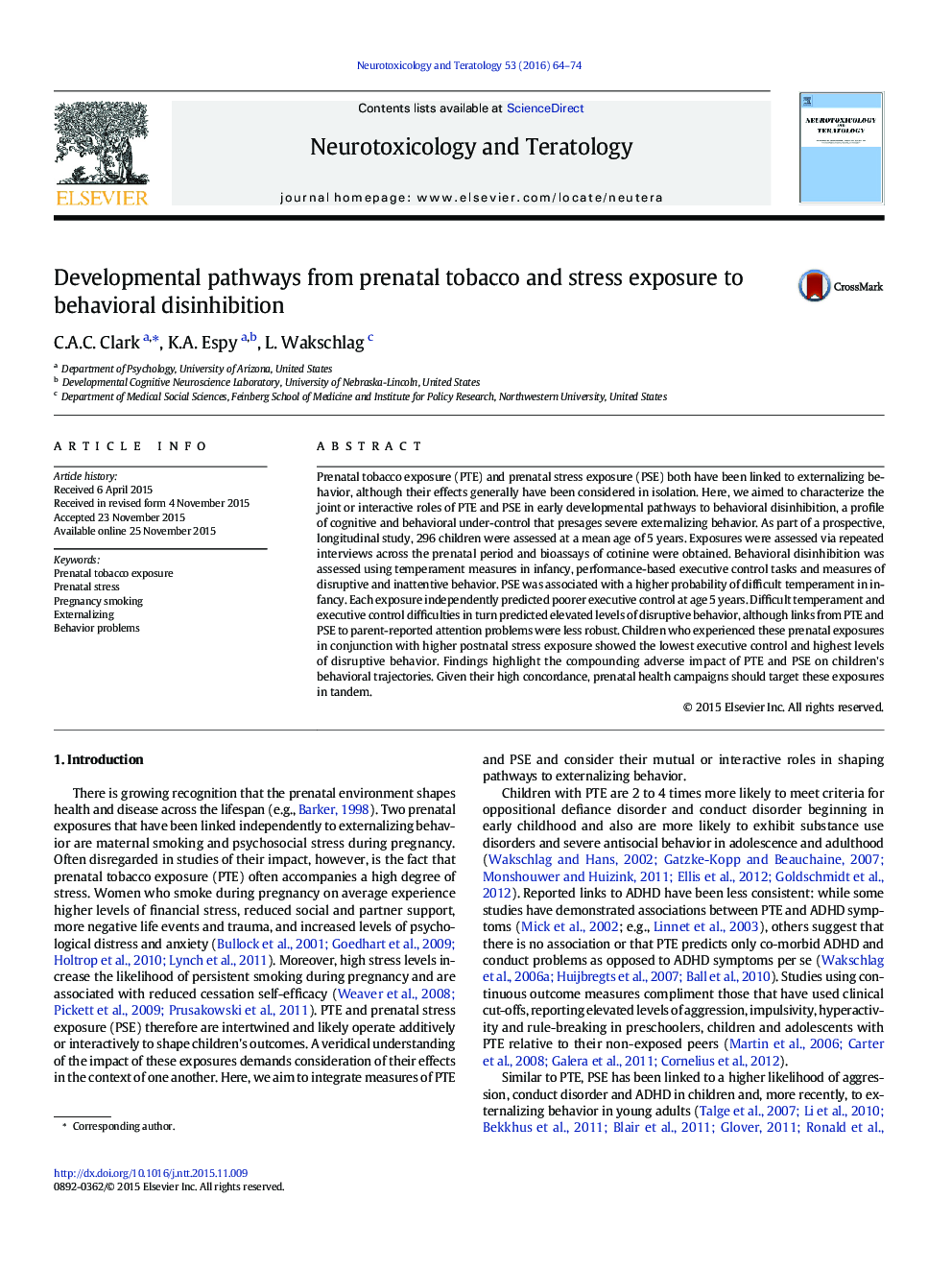| Article ID | Journal | Published Year | Pages | File Type |
|---|---|---|---|---|
| 2590864 | Neurotoxicology and Teratology | 2016 | 11 Pages |
•Few studies have considered the combined roles of prenatal tobacco (PTE) and prenatal stress exposure (PSE) in problem behavior trajectories.•Prospective measures of PTE and PSE each predicted less easy infant temperament, lower preschool executive control and more disruptive behavior.•Cross-temporal links between these adverse outcomes suggest that PTE and PSE portend an early-emerging profile of behavioral disinhibition.•Postnatal stress interacted with the prenatal exposures to amplify their relations to adverse behavioral outcomes.•Studies should model the effects of PTE and PSE together, as their co-occurrence may compound risk for disruptive behavior trajectories.
Prenatal tobacco exposure (PTE) and prenatal stress exposure (PSE) both have been linked to externalizing behavior, although their effects generally have been considered in isolation. Here, we aimed to characterize the joint or interactive roles of PTE and PSE in early developmental pathways to behavioral disinhibition, a profile of cognitive and behavioral under-control that presages severe externalizing behavior. As part of a prospective, longitudinal study, 296 children were assessed at a mean age of 5 years. Exposures were assessed via repeated interviews across the prenatal period and bioassays of cotinine were obtained. Behavioral disinhibition was assessed using temperament measures in infancy, performance-based executive control tasks and measures of disruptive and inattentive behavior. PSE was associated with a higher probability of difficult temperament in infancy. Each exposure independently predicted poorer executive control at age 5 years. Difficult temperament and executive control difficulties in turn predicted elevated levels of disruptive behavior, although links from PTE and PSE to parent-reported attention problems were less robust. Children who experienced these prenatal exposures in conjunction with higher postnatal stress exposure showed the lowest executive control and highest levels of disruptive behavior. Findings highlight the compounding adverse impact of PTE and PSE on children's behavioral trajectories. Given their high concordance, prenatal health campaigns should target these exposures in tandem.
